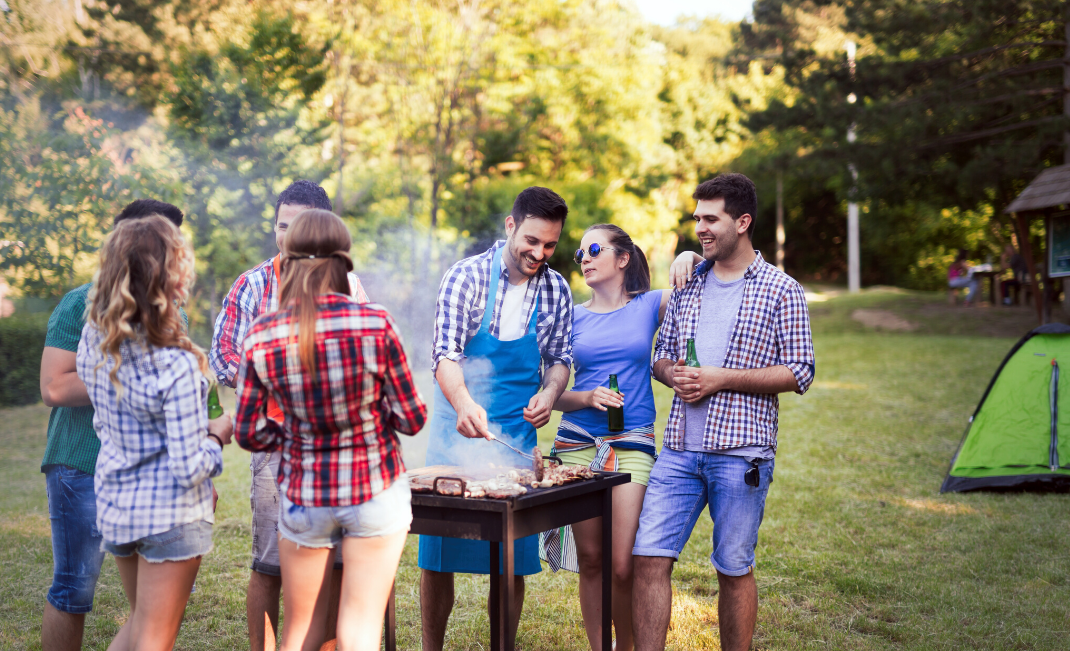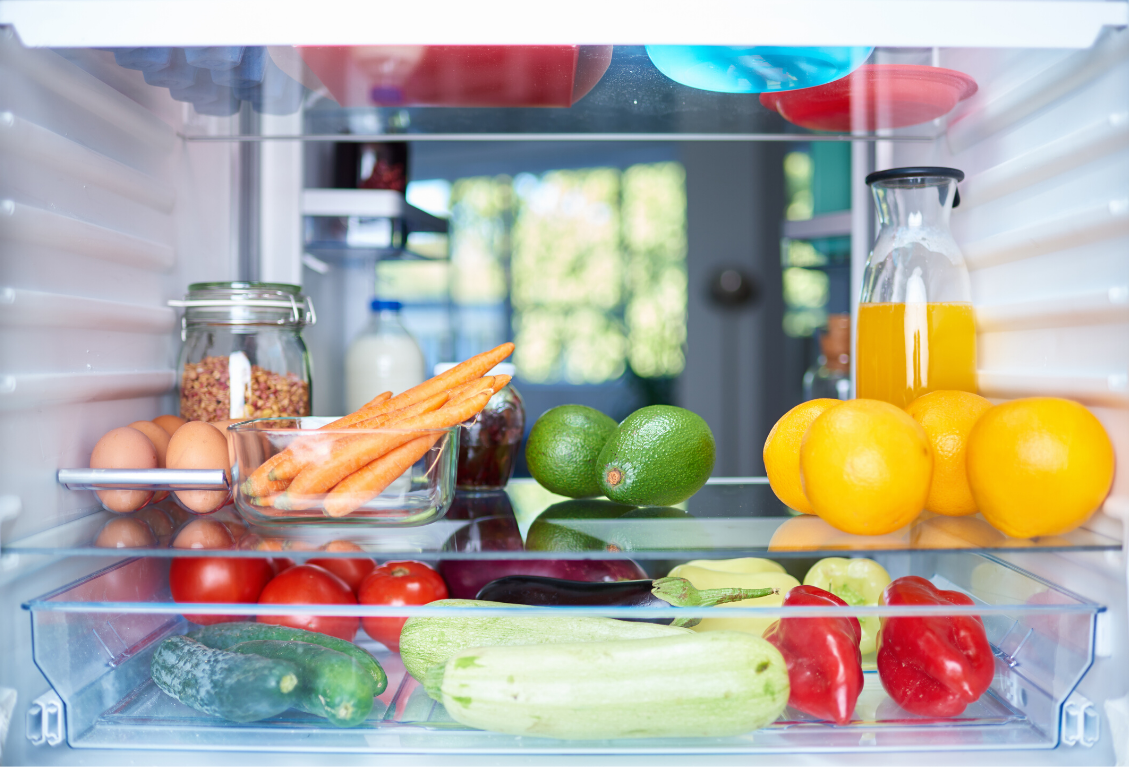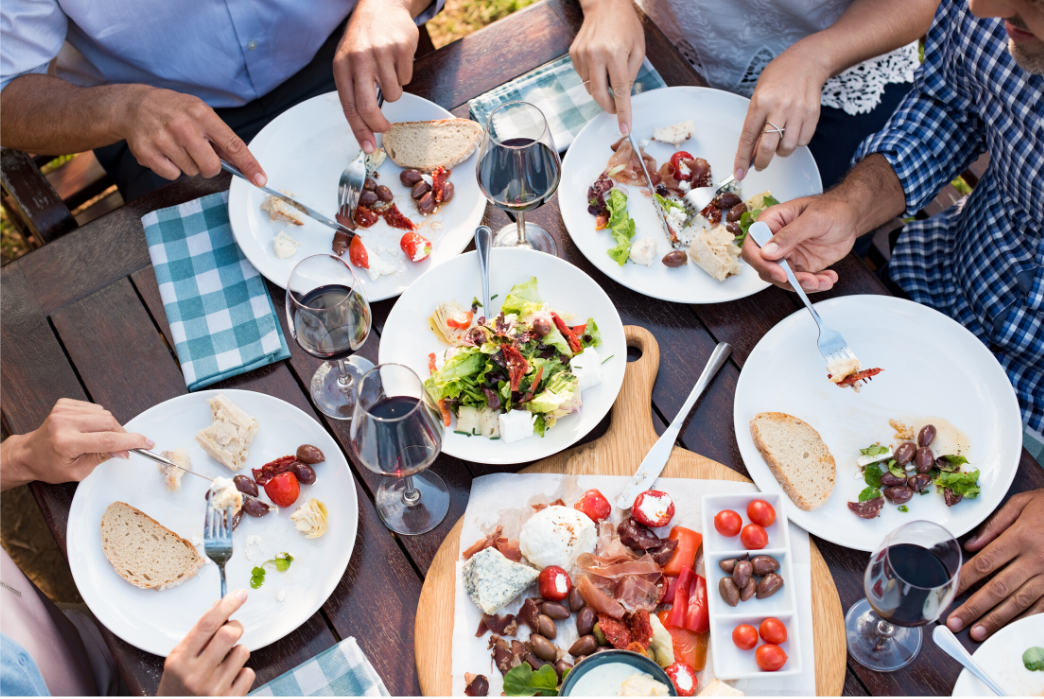Summer grilling, cookouts, and picnics mean that food is being prepared and consumed outside. Temperatures are warmer, and bacteria grow faster in warm temperatures. This is why incidences of foodborne illness increase in the summer.
It’s easy to become relaxed and distracted while you put together a feast or enjoy a cookout with loved ones. As a result, you may be less stringent with food safety guidelines. Food may be left outside much longer than is safe.
E. Coli, listeria, salmonella, and other foodborne diseases love the summer. When you combine hot weather and a lapse in food safety protocol, it’s a good combination for infection and sickness.
Learn (or refresh yourself) on these simple food safety tips so picnic goers can stay healthy and enjoy the summer months!
COMMON FOOD SAFETY MISTAKES
It seems natural to place a plate of raw chicken on an outside table while you get the grill fired up and running. But as innocent as it seems, this is a food safety no-no. Most food safety mistakes can be corrected with a bit of knowledge.
These are some common food safety mistakes…
- Leaving raw meat out of the refrigerator for extended periods of time. This allows harmful bacteria to multiply.
- Leaving cooked food uncovered. This exposes food to bugs and creates an environment for illness-causing pathogens to thrive.
- Not properly sanitizing or disinfecting food prep surfaces and tools. This can spread unsafe juices and particles between counters, knives, cutting boards, plates, tongs, and other surfaces or tools you use for food preparation.
- Using the same food prep tools and surfaces for all foods. This mistake creates an environment where bacteria and viruses aren’t contained to specific areas and are more likely to spread.
- Leaving food out in the sun. This increases the speed at which pathogens multiply and decreases the window for safe consumption.

FOOD SAFETY TIPS
If you’re wary of cooking or eating outdoors now, don’t be! You can still enjoy these warm weather months and everything summer has to offer. Follow the Center for Disease Control’s 4 Steps To Food Safety and reference the below additional guidelines to ensure your summer celebrations stay safe and healthy.
1. COOK FOOD THOROUGHLY
Meat and veggies are delicious – but dangerous if not prepared correctly. Unless you’re a chef, you may not know when your food is cooked all the way through. Don’t be too cool to use a food thermometer to ensure food is cooked to the right temperature. The CDC’s recommended cooking temperatures are:
- 145°F for whole cuts of beef, pork, lamb, veal, and fish.
- 160°F for hamburgers and other ground beef, all poultry, and meats like hot dogs or sausages.

2. STORE FOOD AT A SAFE TEMPERATURE
Once you cook your food to the correct temperature, your work isn’t done. After you’ve carefully prepped, cooked, and served up some delicious food, be sure to store it at the correct temperature.
A good rule of thumb is to freeze or refrigerate food within two hours of cooking it, or one hour if the temperature is above 90 degrees. Be sure to store food in a refrigerator that is at least 40 degrees or cooler.
3. DON’T LEAVE FOOD UNCOVERED, ESPECIALLY OUTDOORS
Leaving food uncovered outside exposes it to debris, insects, and of course, pathogens. Leaving food uncovered increases the likelihood of a dish becoming contaminated.
Leave food out for no more than two hours, regardless of whether you’re indoors or outdoors. Although leaving food out may be more convenient, putting it in the fridge is a safer option.
4. USE COLOR-CODED PREP MATERIALS FOR DIFFERENT TYPES OF PRODUCE AND MEATS
Using a color-coded prep system for produce and meats helps to prevent cross-contamination and all of the dangers that come with it. You can implement this by designating colored cutting boards, bowls, and utensils for different foods.
An example would be to use a red cutting board for chicken only, green cutting boards for vegetables, and blue cutting boards for fruit. This is a quick and easy way to avoid moving bacteria between surfaces and foods.
5. SMELL AND EXAMINE FOOD BEFORE EATING
We’ve all done it: open a container or a gallon of milk and take a whiff to see if it passes the smell test. It should go without saying that if something smells funny, you shouldn’t eat it. A telltale sign of spoiled food is a sour, rancid odor.
Food can start to smell if it is expired or has been left out too long. This is nature’s way of trying to stop you from making a bad decision. Another consideration after smell is appearance. Green or yellow patches and white fuzz is also a sign of spoiled food. Just like with that smell, if something looks funny, take a pass.
6. DON’T EAT FOOD PAST THE EXPIRATION DATE
Nothing is more frustrating than reaching into your refrigerator with a plan to make a wonderful summer side dish, and realizing that a key ingredient has expired.
If an item is past the expiration date, throw it out. Consuming food past the expiration or “best by” date can have consequences in the form of nausea, diarrhea, and stomach pains. Toss the expired item with no regrets.
7. SANITIZE AND DISINFECT SURFACE AND MATERIALS AFTER EACH USE
While meal prepping for the week or getting dinner ready for the evening, it’s easier to move through to the entire process using the same utensils and surfaces and rinsing or wiping them every now and then.
However, not sanitizing or disinfecting them can result in cross contamination, spreading germs from one surface to another. Have convenient wipes on hand to sanitize utensils and surfaces between uses. Be sure to understand the dwell time needed for any sanitizer or disinfectant you may use.
Be aware that all wipes aren’t created equal. Check out this article for additional information on how to select the best wipe for your need.

SAFE FOOD IS GOOD FOOD
Most people won’t realize that they either didn’t follow proper food safety protocols or were the victim of someone else not following food safety protocols until they get sick. And by that time it’s too late to go back and do something different.
Following food safety steps, no matter what time of year, is imperative. Safe food starts with safe food practices. Implement the above tips in your food prep to keep food not tasty and as safe as possible.
